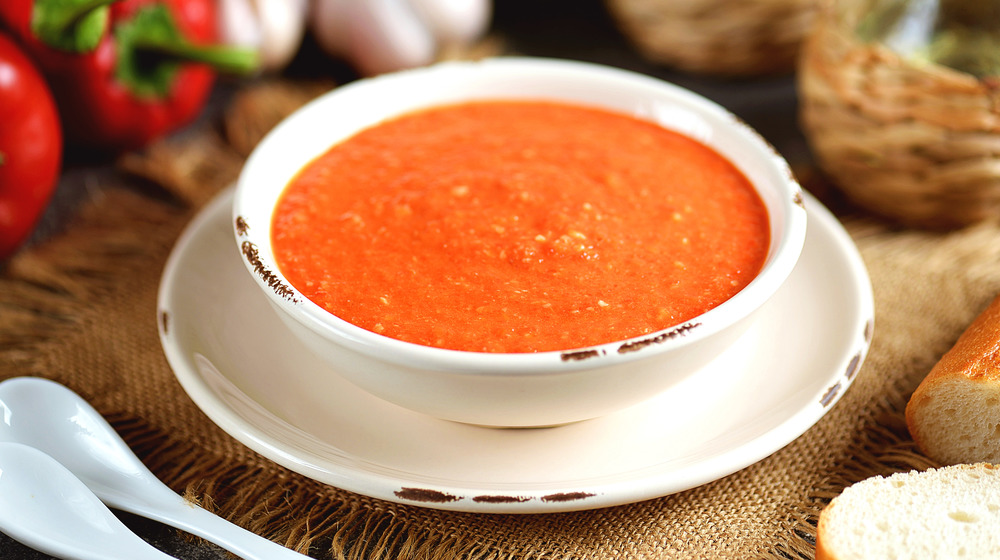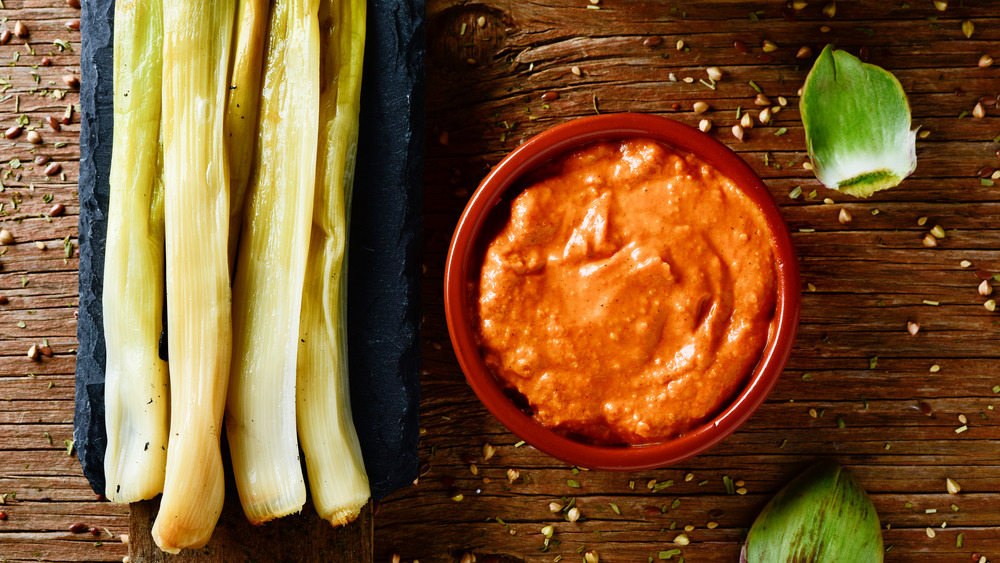What Is Romesco Sauce And What Does It Taste Like?
When envisioning the world's best sauces, you may not immediately think of "nuts" or "bread" as necessary ingredients. When it comes to romesco, though, that couldn't be further from the truth. Immensely versatile, incredibly rich, and totally customizable, the classic Catalan condiment can act as a spread, a dip, a sauce, and if you get really imaginative, perhaps even a soup. It's also stellar with grilled proteins like fish or even lean meats. Also, romesco is very different from romanesco, which is essentially a sort of cauliflower/broccoli hybrid. (Romanesco is actually super cool, but that's a conversation for another day.)
Romesco is also vegan, dairy free, and can also be low-carb if the bread is omitted, or nut-free is the nuts are omitted, so it's a great recipe when accommodating various dietary restrictions. The sauce was once made with a mortal and pestle, but any ol' blender or food processor will work in 2021. It also doesn't hurt that romesco is absolutely delicious — vegetal, slightly sweet, slightly savory, and subtly nutty. The bread also gives the sauce some body.
According to The Kitchn, romesco sauce originated in the Catalonia region of Spain. It can either be smooth and rich or thick and textured, depending on its ingredients and the vessel in which it is blended.
How do you make romesco sauce?
Traditionally, romesco is tomato-centric, and also contains olive oil, nuts, bread, vinegar, and garlic, but it can easily be spruced up or diversified in a number of ways.
In a majority of recipes these days, it seems as though red pepper or roasted red pepper has taken the place of tomato, but it is important to note that the original Catalonian condiment was very much tomato-based. Perhaps a fair compromise would be to just use both?
The traditionally-used vinegar is sherry, which has an exceptional flavor but can be a bit expensive, so red wine vinegar is certainly a fair trade. The bread is typically either stale and/or toasted. The nuts can also be toasted, and the majority of recipes call for either almonds, hazelnuts, or both — but again, if you happen to have something like walnuts on hand, that should also work fine. Cilantro & Citronella notes that the original recipe calls for ñora peppers, but they are definitely not easily sourced, so ancho or even red bell pepper is an acceptable substitute.
Romesco comes together in almost no time, so it makes for a great weeknight recipe. The next time that you're looking to spruce up grilled fish or for a delicious spread in which to dip some toasted pita, look no further than romesco.

